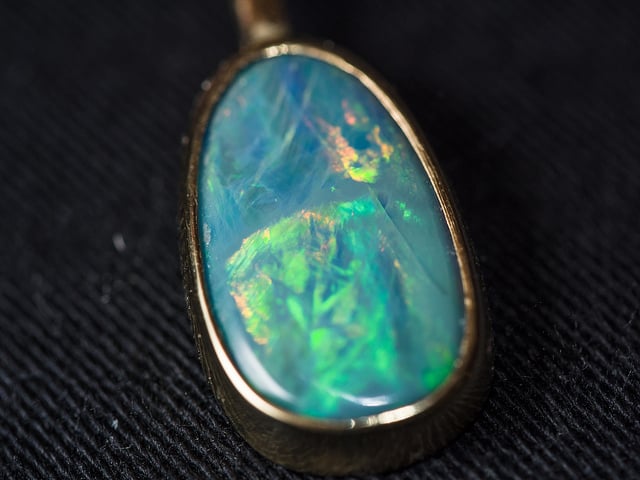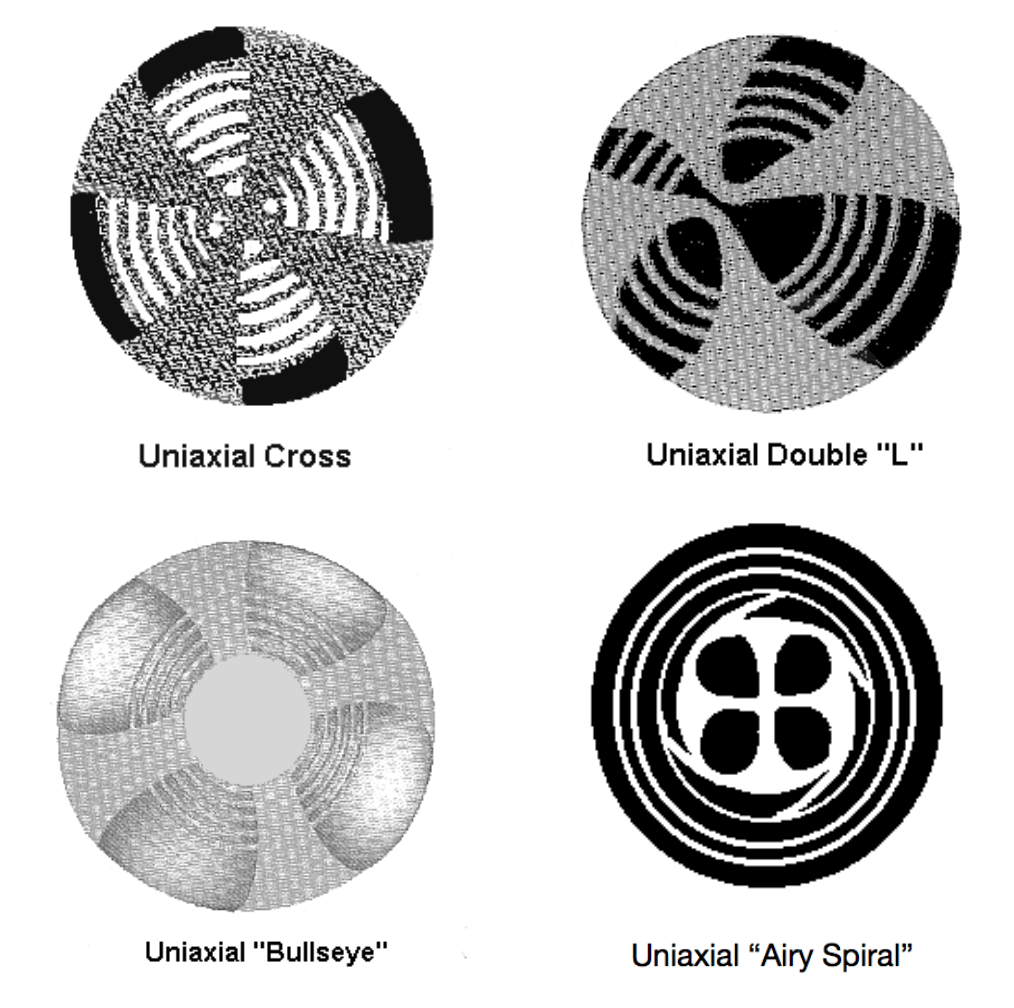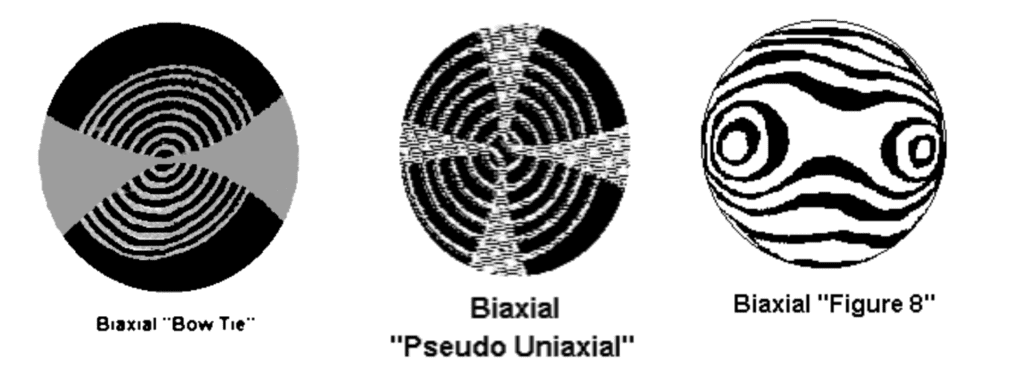Use these gemology cheat sheets to review color and clarity grading, as well as special information on diamond and opal. You can also review basic gem identification testing procedures for the refractometer, polariscope, and specific gravity.
Evaluating Colored Gemstone Clarity
Clarity grading involves examining a gem’s transparency, inclusions, and blemishes.
The Gemological Institute of America (GIA) has devised a clarity grading system that, first, groups colored gemstones into three types:
GIA Clarity Types
I
Usually, eye cleanII
Usually includedIII
Almost always includedAquamarine
Chrysoberyl, yellow and green
Heliodor
Morganite
Smoky Quartz
Spodumene, all
Tanzanite
Tourmaline, green
Zircon, blueAndalusite
Alexandrite
Corundum, all (ruby, sapphire)
Garnet, all
Iolite
Peridot
Quartz (amethyst, citrine, ametrine)
Spinel, all
Tourmaline, all but green, red and watermelon
Zircon, all but blue and colorlessEmerald
Tourmaline, red and watermelonClarity Grades
GIA clarity grades have different meanings, depending on the gem type.
I II III VVS Minute inclusions, difficult to see under 10X. Eye clean. Minor inclusions, somewhat easy to see with 10X. Usually eye clean. Noticeable inclusions under 10X. Usually eye clean. VS Minor inclusions, somewhat easy to see with 10X. Usually eye clean. Noticeable inclusions under 10X. May be eye visible. Obvious inclusions with 10X. May be eye visible. SI1 Easily noticeable with 10X. Slightly visible to the unaided eye. Usually low relief. Obvious inclusions, large or numerous under 10X. Apparent to unaided eye. Prominent to unaided eye. SI2 Easily visible to the unaided eye. Usually low relief. Obvious inclusions, large or numerous under 10X. Very apparent to unaided eye. Very prominent to unaided eye.
I1 Moderate effect on appearance or durability. I2 Severe effect on appearance or durability. I3 Severe effect on both appearance and durability. Dcl Not transparent. Definitions
- 10X: Ten-power magnification, such as that of a hand loupe.
- Eye Clean: Without flaws evident to the naked eye.
- Minute: Something only a trained grader can discern through careful observation.
- Minor: Something a trained grader can see without great effort, but without a significant visual impact.
- Noticeable: Something anyone might notice, with some effect on appearance.
- Obvious: Something immediately visible.
- Prominent: Something that demands your attention and strongly affects the gem’s beauty.
Additional Reading
For more information, read the IGS guide to clarity grading colored stones.
To learn more about inclusions, read the IGS four-part series of articles, beginning with identifying inclusions found in natural gems.
To learn how to evaluate diamond clarity, read the IGS guide to clarity grading diamonds. The IGS also offers a Diamond Specialist Certification Program.
Evaluating Gemstone Color
GIA color descriptions follow this format: hue description and tone/saturation values. For example, a fine ruby would be slbR 6/6; slightly bluish Red, tone Medium, saturation Vivid.
When describing hue, list modifying terms first and capitalized the predominant color.
Color Descriptors
Hue Tone Saturation V = Violet R = Red
O = Orange
Y = Yellow
G = Green
B = Blue
P = Purple
sl = slightly
st = strong
0 Colorless 1 Extremely Light
2 Very Light
3 Light
4 Medium Light
5 Medium
6 Medium Dark
7 Dark
8 Very Dark
9 Extremely Dark
10 Black
Cool Colors 1 Grayish
2 Slightly Grayish
3 Very Slightly Grayish
4 Moderately Strong
5 Strong
6 Vivid
Warm Colors
1 Brownish
2 Slightly Brownish
3 Very Slightly Brownish
4 Moderately Strong
5 Strong
6 Vivid
Additional Reading
For more information on grading gemstone color, read the IGS article on evaluating gem color.
To learn how to color grade diamonds, read the IGS articles on white diamonds and fancy colored diamonds.
To learn about the sources of gem color, read the IGS article on allochromatic and idiochromatic gems.
For information on special problems involving gem color measurement and the development of various color-order systems, read the IGS article on gemstone color measurements and specifications.
Diamond Cut Grading
Modern diamond cut grading requires very accurate measurements. In the table below, you’ll find the tolerances for measuring a diamond’s dimensions.
Modern Diamond Cut Grading Tolerances
Table size 1.0% Crown angle average 0.5° Pavilion angle average 0.2° Average star length 5.0% Average lower-half length 5.0% Average crown height 0.5% Average pavilion depth 0.5% Total depth 0.1% Girdle size verbal Culet size verbal Additional Reading
For more information on these properties and how to determine a cut grade, read the IGS article on modern diamond cut grading methods. In addition, learning traditional diamond cut grading methods will prove helpful.
Opal Terminology
Evaluating opal requires a distinct system, unlike those used for diamonds and colored gems. This system uses unique terminology. The IGS also offers an Opal Specialist Mini-Course.
Opal Body Tone
An opal’s body tone is the base color of the stone, without taking the play of color into account. All body tones from black to white are assigned a value from N1 to N9.
Types of Natural Opal
The designation “natural opal” means the stone has received no treatments or enhancements, other than cutting and polishing. Such gems fall into three categories or types.
Natural Opal Type 1
An opal that has a substantially uniform chemical composition.
Natural Opal Type 2
Commonly known as boulder opal, this type is naturally attached to the host rock in which it was formed. The opal and the host rock have different chemical compositions.
Natural Opal Type 3
Commonly known as matrix opal, this type is found in pores, holes, or between grains of the host rock in which it formed.
Additional Reading
Learn more about opal’s unique qualities from the IGS opal buying guide, appraising guide, and opal engagement ring guide.
Refractometer Procedures
Testing for Birefringence
With the refractometer lens in place and the gem image’s cutoff in view, put the polarizing filter in place. Rotate it a quarter circle or more while you watch the cutoff.
If the band moves, you have a doubly refractive gem.
If the band doesn’t move, give the stone a quarter turn and test it again. Repeat this step as well. If all your readings remain the same, you either have a singly refractive stone or one with very low birefringence. To make that determination, you must use a polariscope. (See below).
Measuring Birefringence
To find the highest and lowest refractive indices (RIs), rotate your gem 30° at a time, for a total of six positions. In each position, test the gem by rotating the polarizing filter. Record the highest and lowest readings at each position.
Next, return the stone to the position where you got the highest reading. Adjust the polarizing filter to where only the highest reading is visible. Now, without moving anything else, give the gem a slight twist to the right, then left. When you find the absolute maximum reading for the gem, record it. Then, repeat this procedure to find the lowest RI.
Subtract the lowest RI from the highest. The difference is the gem’s birefringence.
Optic Character
For gem identification, optic character is a very useful property. It exists in every doubly refractive gem, but not in singly refractive or amorphous materials.
The five optic characters are: uniaxial positive, uniaxial negative, biaxial positive, biaxial negative, and without sign.
You can sometimes determine optic character with a polariscope. However, for some gems, you can only determine it with a refractometer. Using the readings you took while testing for double refraction, you can also ascertain a gem’s optic character.
Review your readings and interpret the results as follows.
Uniaxial Gems
If both RIs remain the same in each position or one RI remains the same and the other varies, you have a uniaxial gem.
While measuring birefringence, you should have found a position with only one RI. If you didn’t, you’ll have to test the stone again on another facet.
Your gem is uniaxial positive if the higher RI is the one that changes. If the lower RI varies, you have an uniaxial negative gem.
Biaxial Gems
If both RIs vary, you have a biaxial gem.
Your gem is biaxial positive if the high RI varies more than the low RI. If the lower value varies the most, your gem is biaxial negative.
Gems Without Sign
If both RIs vary the same amount, you have a gem said to be without sign.
Additional Reading
The three-part IGS guide to using the refractometer contains detailed instructions for testing refractive index, taking readings for cabochon-cut gems, and determining optic character and recognizing various optic effects.
Polariscope Procedures
Testing for Refractive Index
If the Stone Stays Dark
If your gem stays dark, this indicates one of two possibilities. You might have a singly refractive gem. On the other hand, you could be looking straight down the optic axis of a doubly refractive gem. To make sure that’s not the case, test the gem two more times. Turn it on its side and rotate it 360° as you did before. Then repeat the test.
If the gem stays dark in all positions, you have a singly refractive gem. Otherwise, move on to the next test to eliminate the possibility of anomalous double refractive.
If the Stone Changes from Light to Dark
If the light in your gem changes from light to dark, this indicates one of two possibilities. You might have a doubly refractive gem. On the other hand, you might be seeing anomalous double refraction (ADR) from a singly refractive stone.
To test for ADR, set your top filter to its darkest position. Place the stone so maximum light passes through it. Now, quickly rotate the top filter. If the gem gets lighter, you have a singly refractive gem and were seeing ADR. However, if it stays the same or gets darker, you have a doubly refractive gem.
If you think you’re testing garnet or spinel, verify your doubly refractive results with a dichroscope. These singly refractive gems often show ADR.
If the Stone Stays Light
If the gem stays light in all positions, you most likely have an aggregate stone.
Optic Figure
Identifying a gem’s optic figure will tell you whether it’s uniaxial or biaxial.
Reference Site: gemsociety.org



